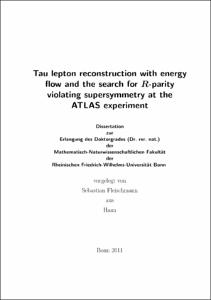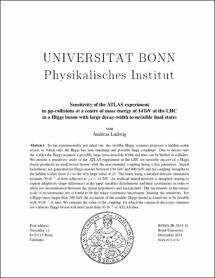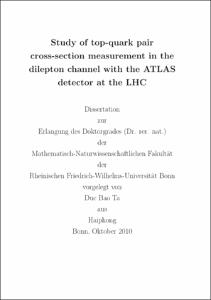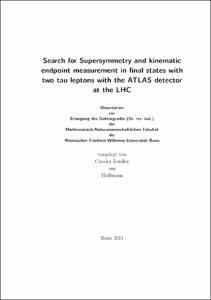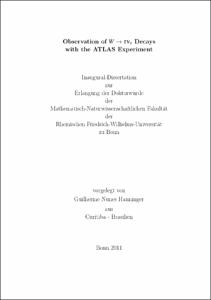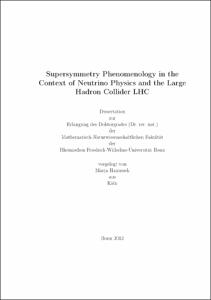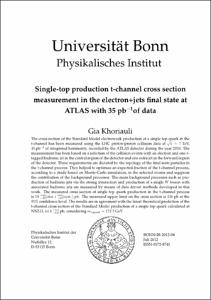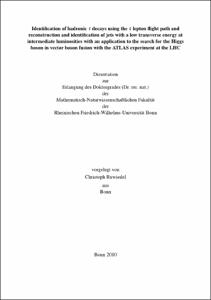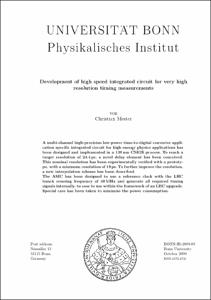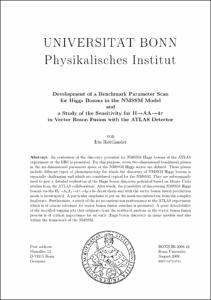E-Dissertationen: Suche
Anzeige der Dokumente 1-10 von 31
Tau lepton reconstruction with energy flow and the search for R-parity violating supersymmetry at the ATLAS experiment
(2012-08-31)
The ATLAS experiment at the Large Hadron Collider (LHC) is measuring proton-proton collisions at a centre-of-mass energy of √s=7 TeV since 2010, an energy never reached before in collider experiments. A wide variety of ...
Sensitivity of the ATLAS experiment in pp-collisions at a centre of mass energy of 14TeV at the LHC to a Higgs boson with large decay-width to invisible final states
(2012-01-20)
So far experimentally not ruled out, the stealthy Higgs scenario proposes a hidden scalar sector, to which only the Higgs has non-vanishing and possibly large couplings. Due to decays into the scalars the Higgs acquires a ...
Study of top-quark pair cross-section measurement in the dilepton channel with the ATLAS detector at the LHC
(2011-09-16)
The top quark is the heaviest of the known fundamental particles in the Standard Model (SM) with a mass of 173.3±1.1GeV. It is the sixth quark in the SM and the weak isospin partner of the bottom quark. Properties such as ......
Search for Supersymmetry and kinematic endpoint measurement in final states with two tau leptons with the ATLAS detector at the LHC
(2011-10-21)
Discovery prospects for Supersymmetry in final states with at least two tau leptons and large missing transverse energy are evaluated for LHC proton-proton collisions measured with the ATLAS detector. In a first study based ......
Das Entdeckungspotential von Supersymmetrie mit Endzust¨anden aus mindesten zwei Tau Leptonen und fehlender Transversalenergie in Proton-Proton Kollisionen wird untersucht, sowie die M¨oglichkeit einer Messung des Endpunktes ......
Das Entdeckungspotential von Supersymmetrie mit Endzust¨anden aus mindesten zwei Tau Leptonen und fehlender Transversalenergie in Proton-Proton Kollisionen wird untersucht, sowie die M¨oglichkeit einer Messung des Endpunktes ......
Observation of W → τντ Decays with the ATLAS Experiment
(2011-05-04)
Physics studies of processes with t leptons in the final state, while challenging at hadron colliders, are of great importance at the LHC. The τ leptons provide important signatures in searches for the Higgs boson as well ......
Supersymmetry Phenomenology in the Context of Neutrino Physics and the Large Hadron Collider LHC
(2012-09-17)
Experimentally, it is well established that the Standard Model of particle physics requires an extension to accommodate the neutrino oscillation data, which indicates that at least two neutrinos are massive and that two ...
Single-top production t-channel cross section measurement in the electron+jets final state at ATLAS with 35 pb-1 of data
(2012-09-03)
The cross section of the Standard Model electroweak production of a single top quark in the t-channel has been measured using the LHC proton-proton collision data at $sqrt{s}=7$ TeV, $35 {\rm pb}^{-1}$ of integrated ...
Identification of hadronic τ decays using the τ lepton flight path and reconstruction and identification of jets with a low transverse energy at intermediate luminosities with an application to the search for the Higgs boson in vector boson fusion with the ATLAS experiment at the LHC
(2010-07-01)
Three studies of different components of the object reconstruction with the ATLAS experiment using simulated data are presented. In each study, a method for the improvement of the reconstruction is developed and the ...
Development of high speed integrated circuit for very high resolution timing measurements
(2009-12-07)
A multi-channel high-precision low-power time-to-digital converter application specific integrated circuit for high energy physics applications has been designed and implemented in a 130 nm CMOS process. To reach a target ...
Development of a Benchmark Parameter Scan for Higgs Bosons in the NMSSM Model and a Study of the Sensitivity for H->AA->4τ in Vector Boson Fusion with the ATLAS Detector
(2008)
An evaluation of the discovery potential for NMSSM Higgs bosons of the ATLAS experiment at the LHC is presented. For this purpose, seven two-dimensional benchmark planes in the six-dimensional parameter space of the ...


